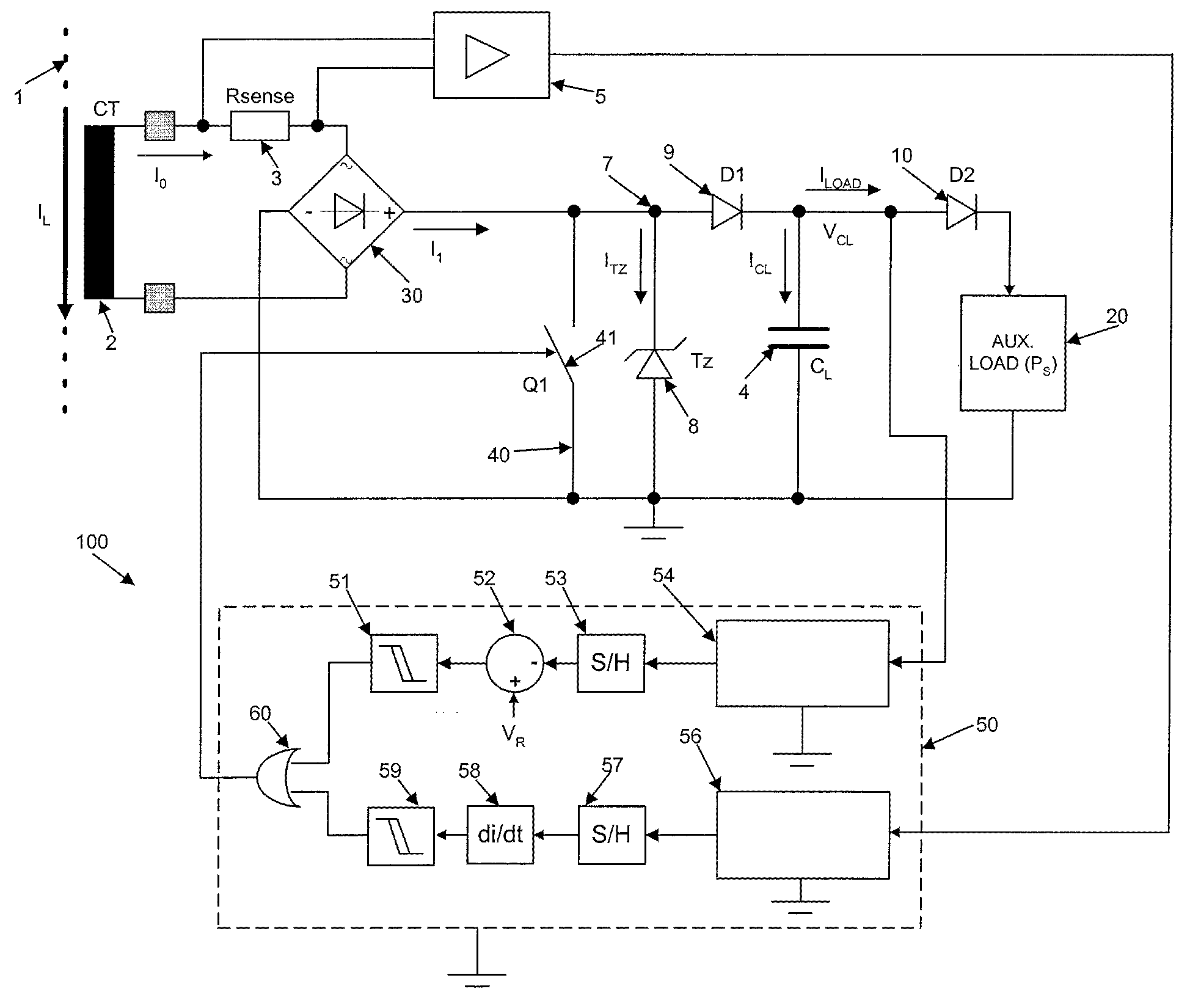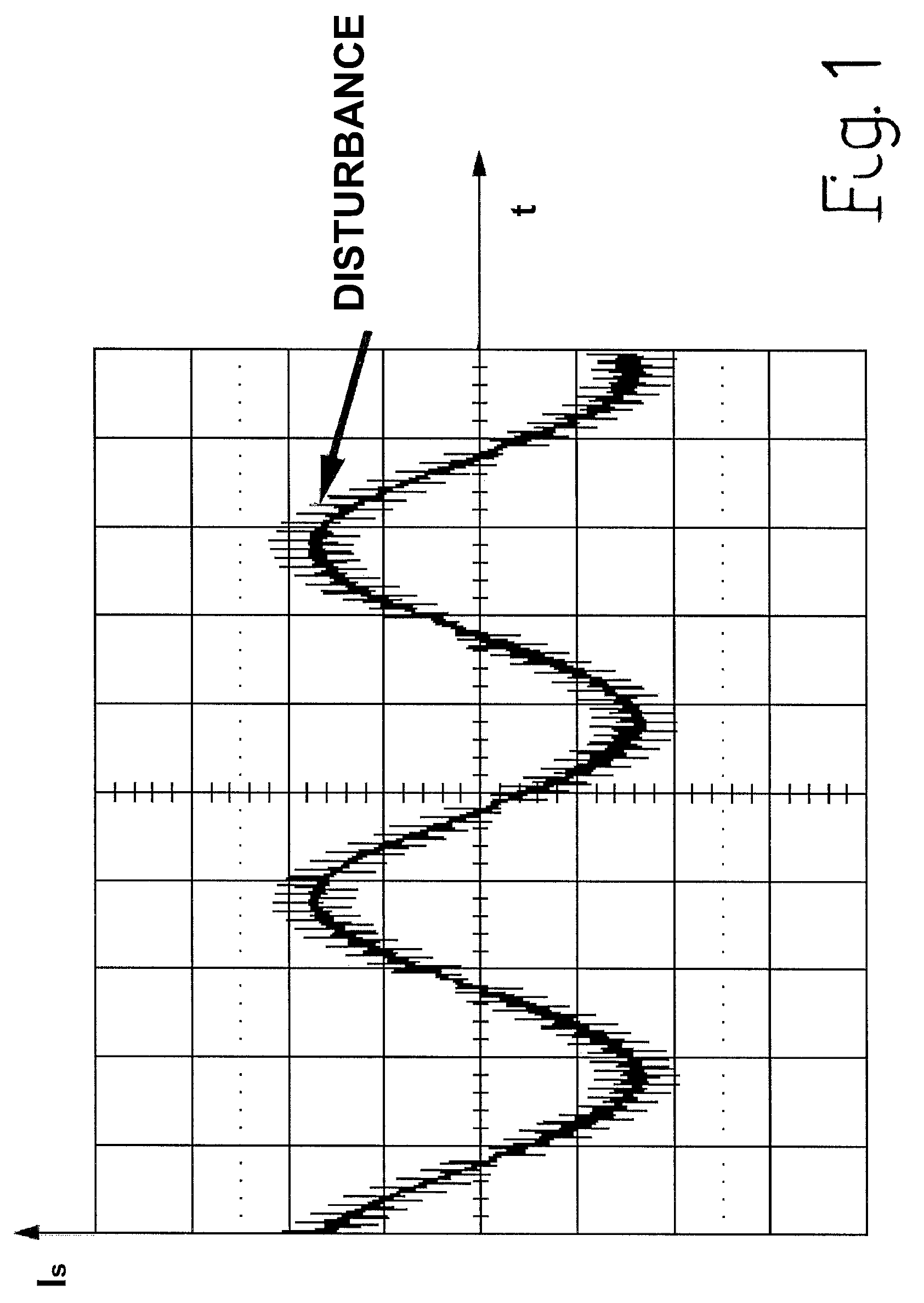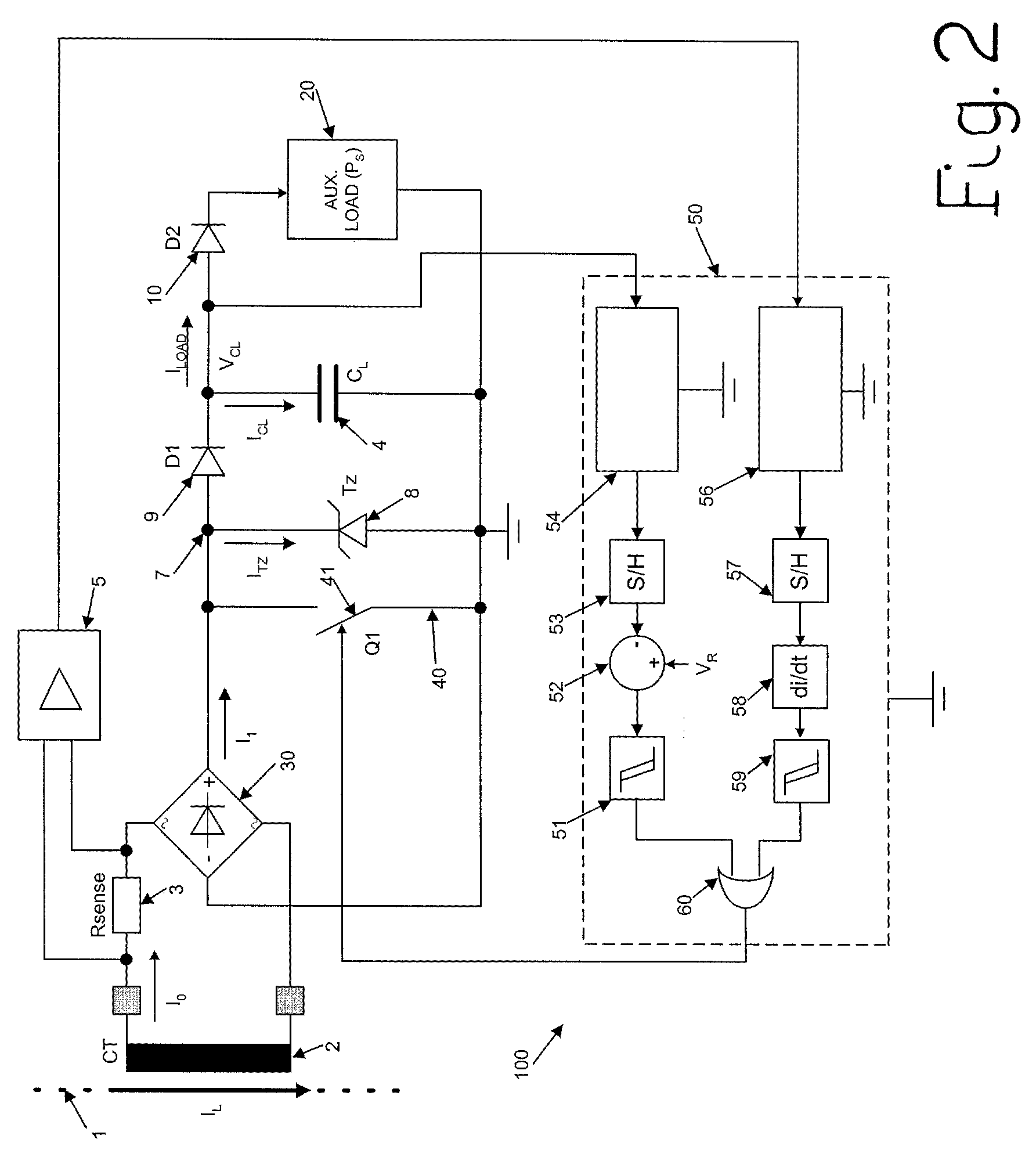Device for powering electric or electronic devices operatively associated with a circuit breaker
a technology of electric or electronic devices and circuit breakers, which is applied in the direction of electric variable regulation, process and machine control, instruments, etc., can solve the problems of insufficient accuracy of said regulation, inability to guarantee stable power supply conditions for an indefinite period, and limited voltage, so as to achieve high energy efficiency and dissipate any excess power
- Summary
- Abstract
- Description
- Claims
- Application Information
AI Technical Summary
Benefits of technology
Problems solved by technology
Method used
Image
Examples
Embodiment Construction
[0036]FIG. 2 schematically illustrates a first embodiment of the power supply device according to the invention, indicated globally by the reference numeral 100, which comprises: means suitable for taking power from a power supply line 1; electronic regulating means that receive the power collected by the means for taking power 1, preferably in the form of a current, as input and that deliver a supply voltage (Vout) with a value coming within a range established in relation to a preset reference voltage (VR) to the electric / electronic device(s) being powered, schematically indicated by the reference numeral 20.
[0037]To facilitate the description, only a single device 20 to power is illustrated in the figures, although several electric / electronic devices 20 may clearly be powered simultaneously by the device according to the invention.
[0038]Moreover, the figures only illustrate a single conductor 1 from the power supply line; this is on the understanding that the content of the follo...
PUM
 Login to View More
Login to View More Abstract
Description
Claims
Application Information
 Login to View More
Login to View More - R&D
- Intellectual Property
- Life Sciences
- Materials
- Tech Scout
- Unparalleled Data Quality
- Higher Quality Content
- 60% Fewer Hallucinations
Browse by: Latest US Patents, China's latest patents, Technical Efficacy Thesaurus, Application Domain, Technology Topic, Popular Technical Reports.
© 2025 PatSnap. All rights reserved.Legal|Privacy policy|Modern Slavery Act Transparency Statement|Sitemap|About US| Contact US: help@patsnap.com



